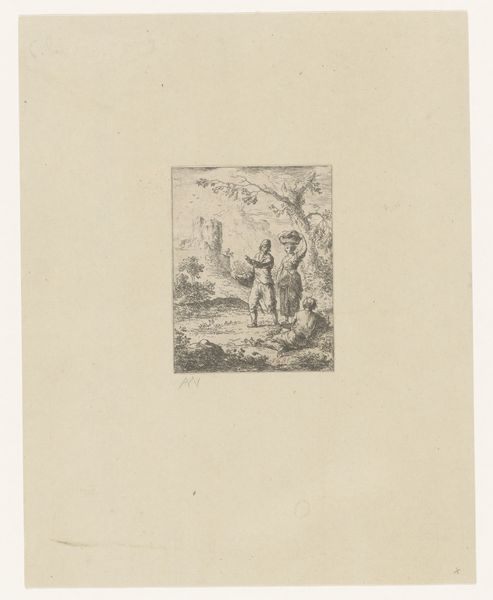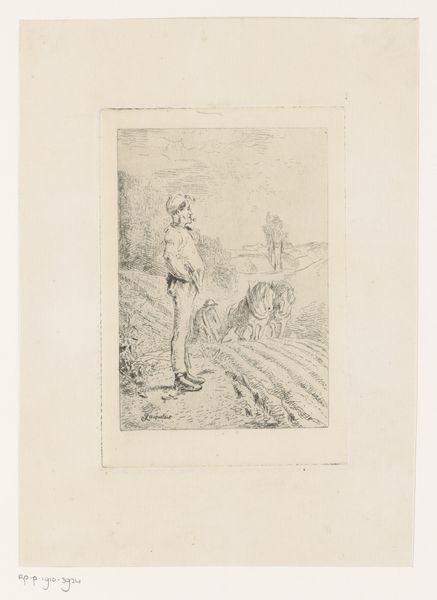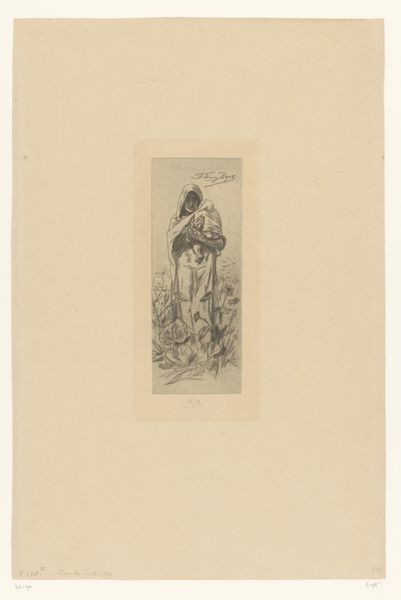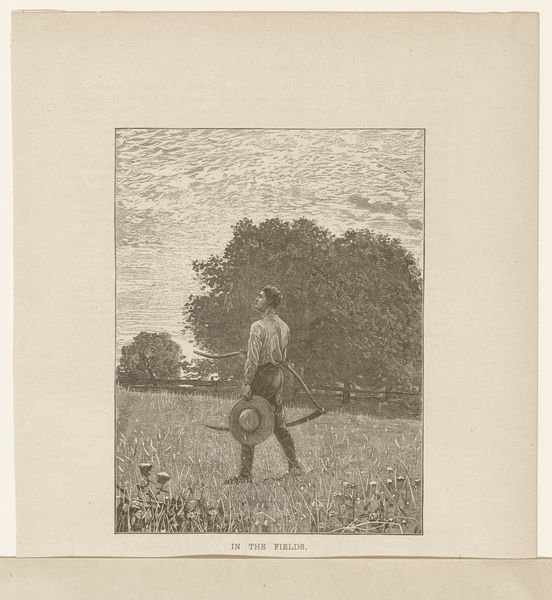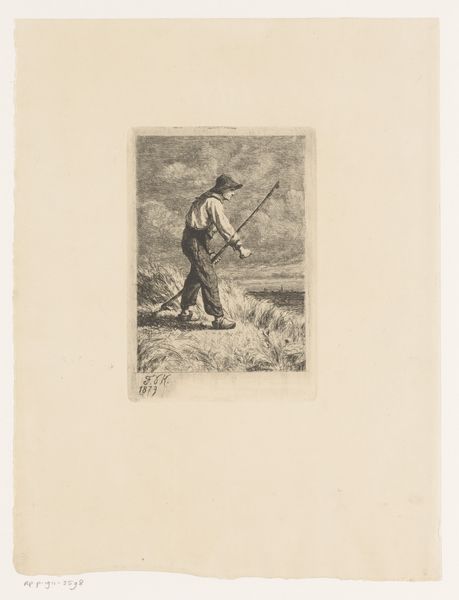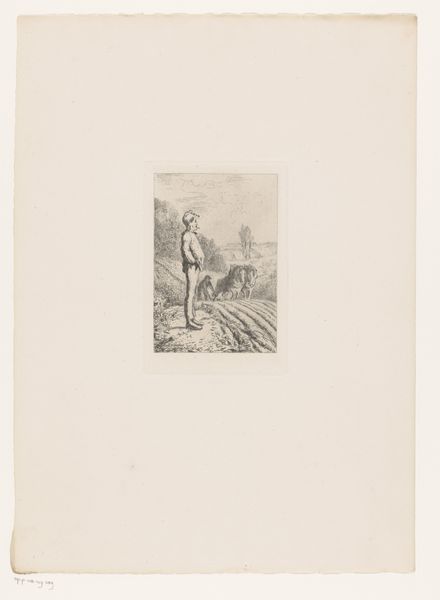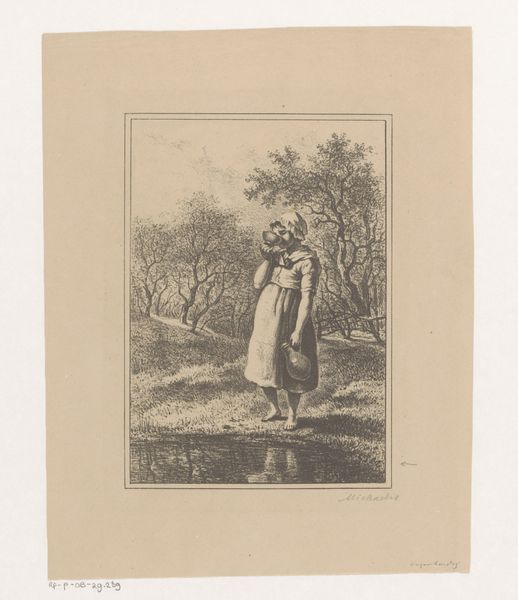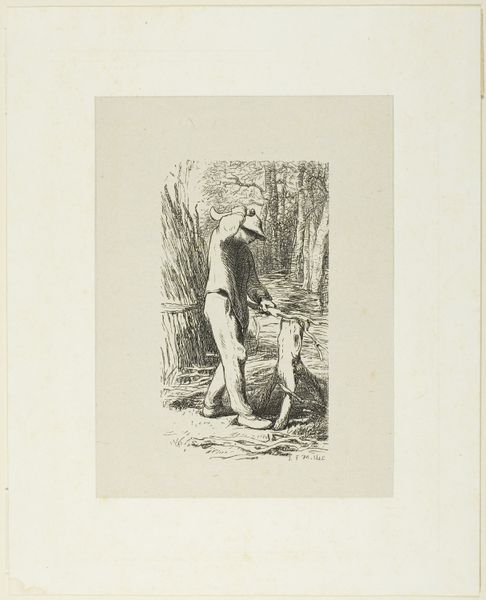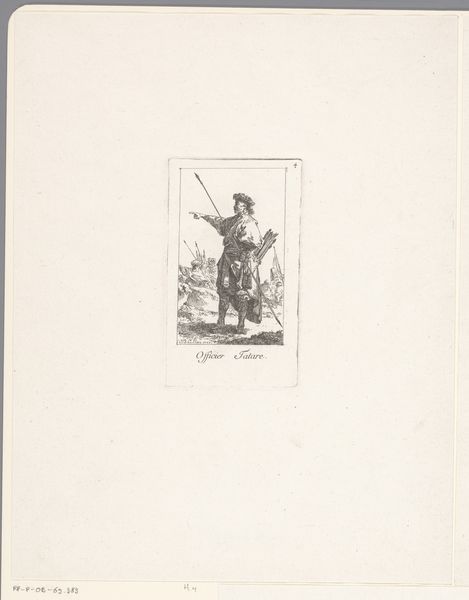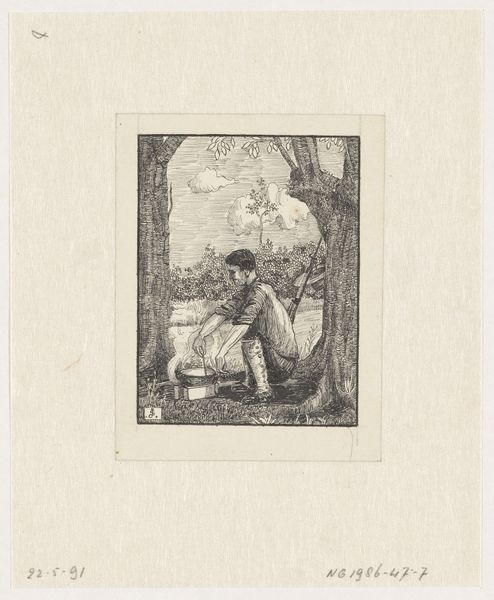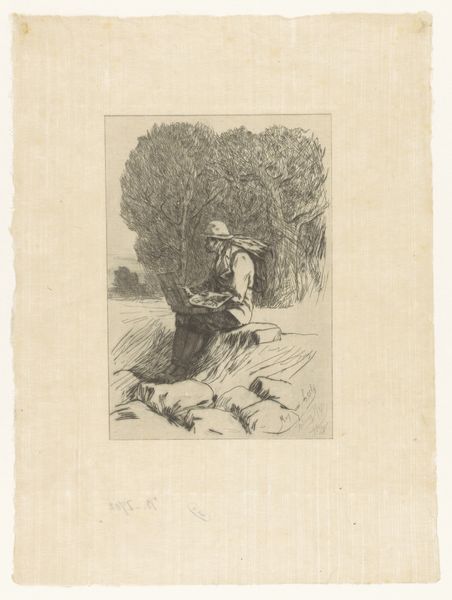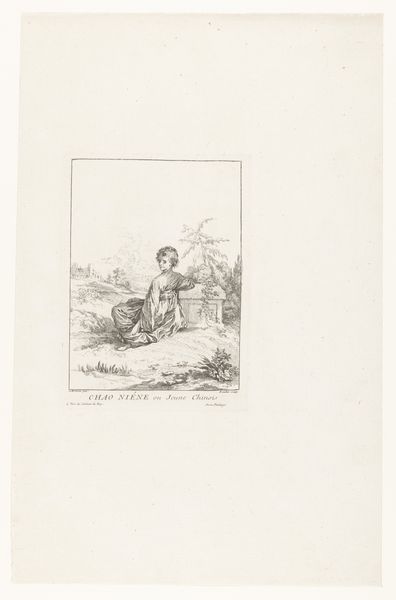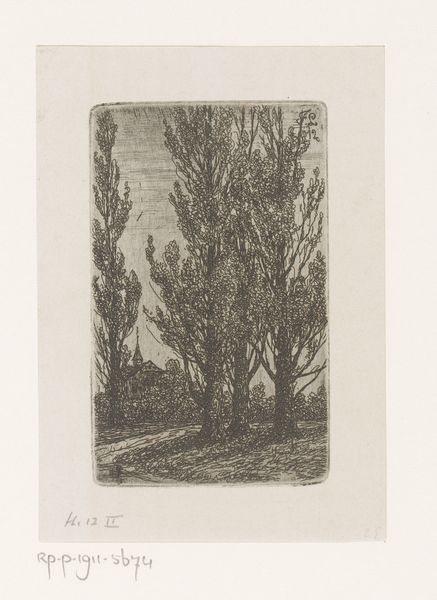
drawing, etching, paper
#
portrait
#
pencil drawn
#
drawing
#
etching
#
pencil sketch
#
dog
#
landscape
#
german-expressionism
#
figuration
#
paper
#
pencil drawing
#
pen-ink sketch
Dimensions: height 190 mm, width 126 mm
Copyright: Rijks Museum: Open Domain
Curator: The etching before us, "Jongen met hond in een veld" or "Boy with Dog in a Field," dates to 1917 and is the work of German artist Hans Thoma. It’s a piece rendered in delicate lines on paper. What strikes you first about it? Editor: Immediately, it's the seemingly contradictory atmosphere. There's a lightness to the sketch, yet a feeling of unrest seems to simmer beneath the surface. The boy's posture, that raised stick—it hints at something more than a pastoral scene. Curator: Exactly. Thoma, while associated with German Expressionism, often intertwined his subjects with a palpable social undercurrent. This etching is especially fascinating, the materials—etching on paper—emphasize accessibility. Prints democratized art viewing; one can consider who the intended audience for such a work would have been in 1917 during a World War. Editor: You're right. And consider the image itself: a boy and his dog are placed in a rural field; yet there's a soldier and horse in the background! The materials speak of mass reproduction while the picture points to individual experience within public events, making it a potent commentary on German society during wartime. How are individuals experiencing war? What place does innocence have in the mechanized theatre of death? Curator: I concur that he is intentionally blurring the line between idyll and the somber reality of war, showing the disruption of rural communities and its effect on the collective. Thoma utilized his skills in drawing and printmaking to underscore human impacts from broad-scale conflict and mass deaths on the home front. Editor: Absolutely. Even the choice of etching itself lends to this; it's reproducible, mimicking the mass production central to both industrialism and warfare. He makes very clear that while we may witness such individual narratives and experiences of loss and dread, they're representative of larger trends in society during times of war. Curator: Considering how Thoma positions this everyday rural scenario within the shadow of World War I opens new interpretations. It speaks to the disruptions and realities on society, even within seemingly remote settings. Editor: It does invite somber reflection. Thank you for sharing your expertise! Curator: And thank you. It has me rethinking this piece, appreciating the intricate ways in which Thoma weaves a tale of individuals into the machinery of broad histories.
Comments
No comments
Be the first to comment and join the conversation on the ultimate creative platform.
